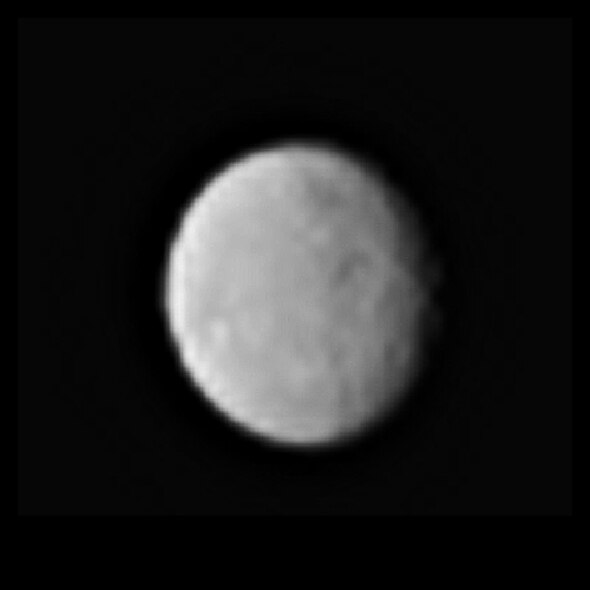Create a free profile to get unlimited access to exclusive videos, sweepstakes, and more!
Dawn Approaches Ceres

Ceres is the largest asteroid in the solar system—about 970 kilometers in diameter—but so far from Earth that it generally just looks like a blurry disk at best.
But that’s about to change. A lot. The Dawn spacecraft is slowly edging toward the asteroid, and on Jan. 13, 2015, it took a series (haha! I love homophones) of images that have been stitched together to make this nifty animation:
Dawn was about 383,000 km (238,000 miles) from Ceres when it took those shots, which is the same distance the Earth is from the Moon. Details are still difficult to make out but you can see a bright spot (I suspect the same one seen in earlier Hubble images) and some large craters. You can also see Ceres is noticeably flattened; it’s about 7 percent wider across the equator than through the poles (though to be fair I think that looks a bit exaggerated due to the location of the terminator, the day-night line).
These images are tantalizing—they rival but don’t quite surpass the best images of Ceres taken by Hubble—but in a little while we’ll be seeing much, much more detailed images of this world. It’ll eventually orbit only a few hundred kilometers over the surface, and the images returned will be quite high resolution indeed.
Dawn launched in 2007 after an interesting history (it was canceled by NASA, then reinstated), and reached the asteroid Vesta in 2011. It orbited Vesta for more than a year, mapping its surface in exquisite detail. It left Vesta in September 2012, and spent the next couple of years moving toward Ceres. It’s approaching now, and is expected to achieve orbit in early March.
Dawn uses an innovative engine called an ion drive. Any engine to move a spacecraft uses Newton’s third law of motion: Every action has an opposite and equal reaction. If you throw something really hard in one direction, it pushes on you equally hard in the opposite direction.
Rockets usually combine a huge amount of chemicals together, which get very hot, expand rapidly, and blow out the back of the rocket. This is a pretty violent effect, and it produces a lot of thrust.
Ion engines are different. They use either magnets or electric fields to accelerate and shoot individual atoms out the back of the engine. The atoms have a lot less mass than what’s used in chemical rockets, but they move a lot faster. The overall effect is a very low but extremely efficient thrust, and you can keep the engine blowing out atoms for years at a time, building up a huge speed. Dawn’s engines use an electric field to fling out xenon ions, and its fuel tank only carries about 425 kilograms (940 pounds) of fuel; in a day it only uses about 280 grams.
But that’s why it’s taken so long to go from Vesta to Ceres; it thrusts low but long. Now it’s approaching the giant asteroid, and soon it will go from a fuzzy disk to a fantastically detailed and amazing world. Stay tuned. This is going to be great.
Correction, Jan. 20, 2015, at 15:30 UTC: Arg! I originally misstated that series and Ceres are homonyms, but they are homophones. Homo=same, nym=name, phone=sound. So two words that are spelled the same way but mean different things are homonyms, but two words that sound the same but are spelled differently are homophones. I blue it their.
Correction, Jan. 20, 2015, at 16:30 UTC: I also originally misstated that these images were from the low-resolution camera, but the framing camera is the only optical-light camera on board Dawn. There is also a spectrometer that can do surface mineralogy, and a gamma ray and neutron detector that can determine elemental composition on and slightly below the asteroid surface.














